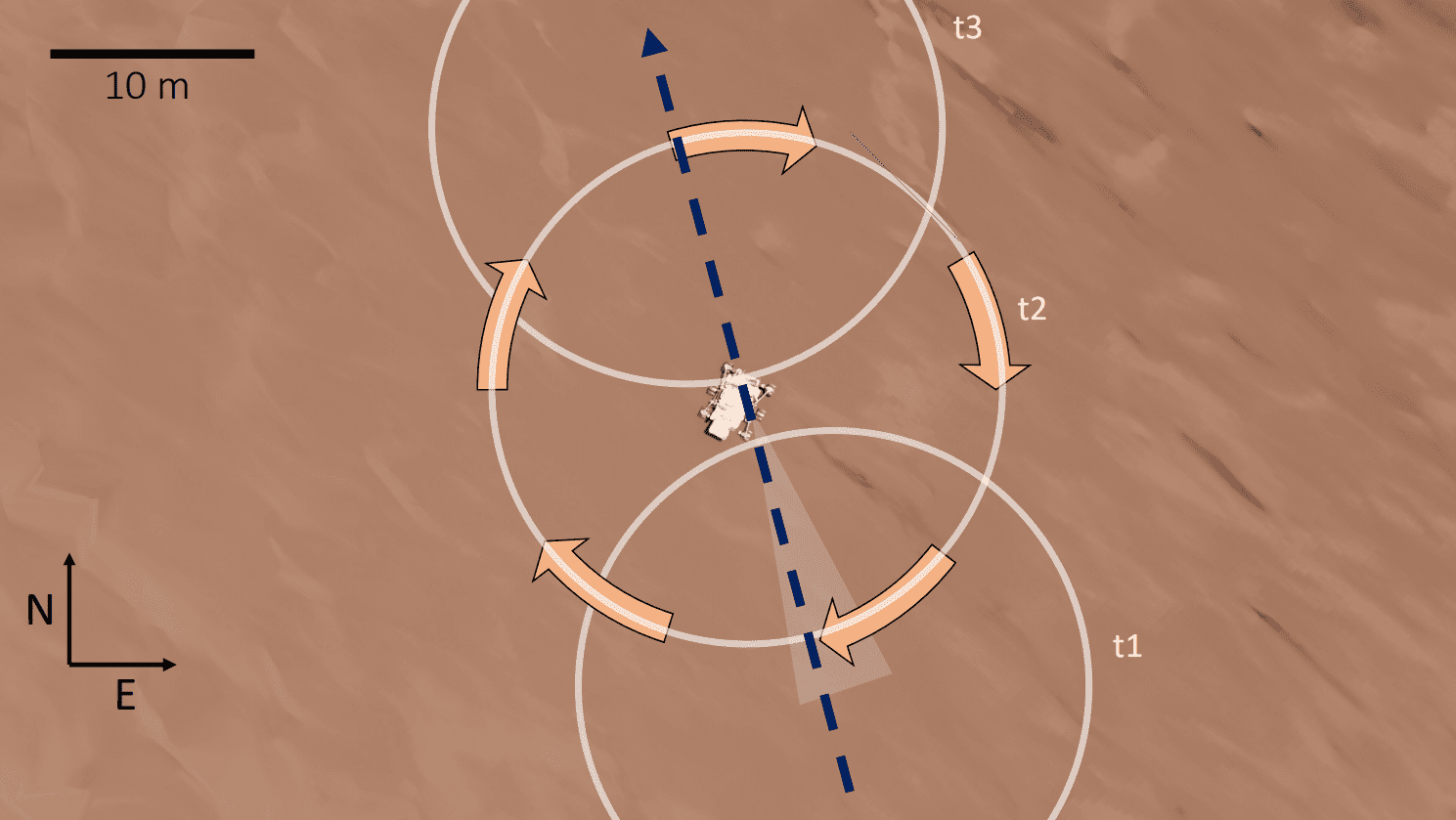Dust devils are a common feature seen in many locations across Mars by the robotic explorers we have sent there. They have been extensively photographed but now, for the first time, we also know what they sound like. Thanks to the SuperCam microphones onboard NASA’s Perseverance scientists were able to record a dust devil as it engulfed the rover.
“We’ve been able to record for the first time ever, the sounds of dust devil coming over the rover, the first Martian dust devil’s sounds,” lead author Dr Naomi Murdoch, from the Université de Toulouse, told IFLScience. “We had not only the sound but also all of the meteorology sensors on and we also had the cameras on. We were able to put that all together, and we were able to characterize really well this vortex.”
We hope that this shows how valuable acoustic data are
Dr Naomi Murdoch
The team determined that the vortex was at least 25 meters across (82 feet), about 10 times the size of the rover, and at least 118 meters (387 feet) tall. Luckily, the Martian atmosphere is just 1 percent the density of Earth’s so the wind pressure from the dust devil was not damaging to Perseverance and instead just rolled over it.
“When we listen to the microphone data, we can hear a big wind gust, then silence when we’re in the eye of the vortex, and then a big wind gust again as we come out. So that’s how we know it went right over the head of the rover,” Dr Murdoch explained to IFLScience.
The SuperCam microphone team had already announced earlier this year the first-ever measurement of the speed of sound on Mars. We were then delighted to hear the different artificial sounds also recorded, from the rover’s laser-equipped instruments to Ingenuity spinning its blades as it flew around Mars.

Schematic of the trajectory of the dust devils through Perseveranca. Image Credits: N. Murdoch / ISAE-SUPAERO
The recordings from the microphones are so sophisticated and responsive that the team was able to hear impacting dust particles. They were able to quantify how much dust is lifted by dust devils and in dust clouds.
Dust devils were also seen by Spirit and Opportunity. In fact, these weather phenomena actually helped clean the rovers when they got covered in dust and keep them going.
InSight, however, did not see any throughout its mission, and yet, the team did manage to measure some dustless devils, knowns as convective vortices, that don’t seem to pick up dust. Interactions between the atmosphere and surface can lift dust in some areas of Mars but not in others. The reason behind this discrepancy is a major open question.

Dust devils spotted by Perseverance in Jezero Crater. Image Credit: NASA/JPL-Caltech/SSI
“We hope that with these acoustic recordings, we’re actually going to help to answer that question,” Dr Murdoch told IFLScience.
“Because we can hear the dust impacts, that means that we can count the number of particles, because we can count the impact. And we have the wind measurements and the atmospheric measurements and that allows us to quantify how much dust is lifted, how many particles are being transported, and under what conditions. So we hope that this shows how valuable acoustic data are as we go forward for studying this poorly understood dust lifting process on Mars.”
The findings are published in Nature Communications.
Source Link: First-Ever Sounds Of A Dust Devil On Mars Revealed